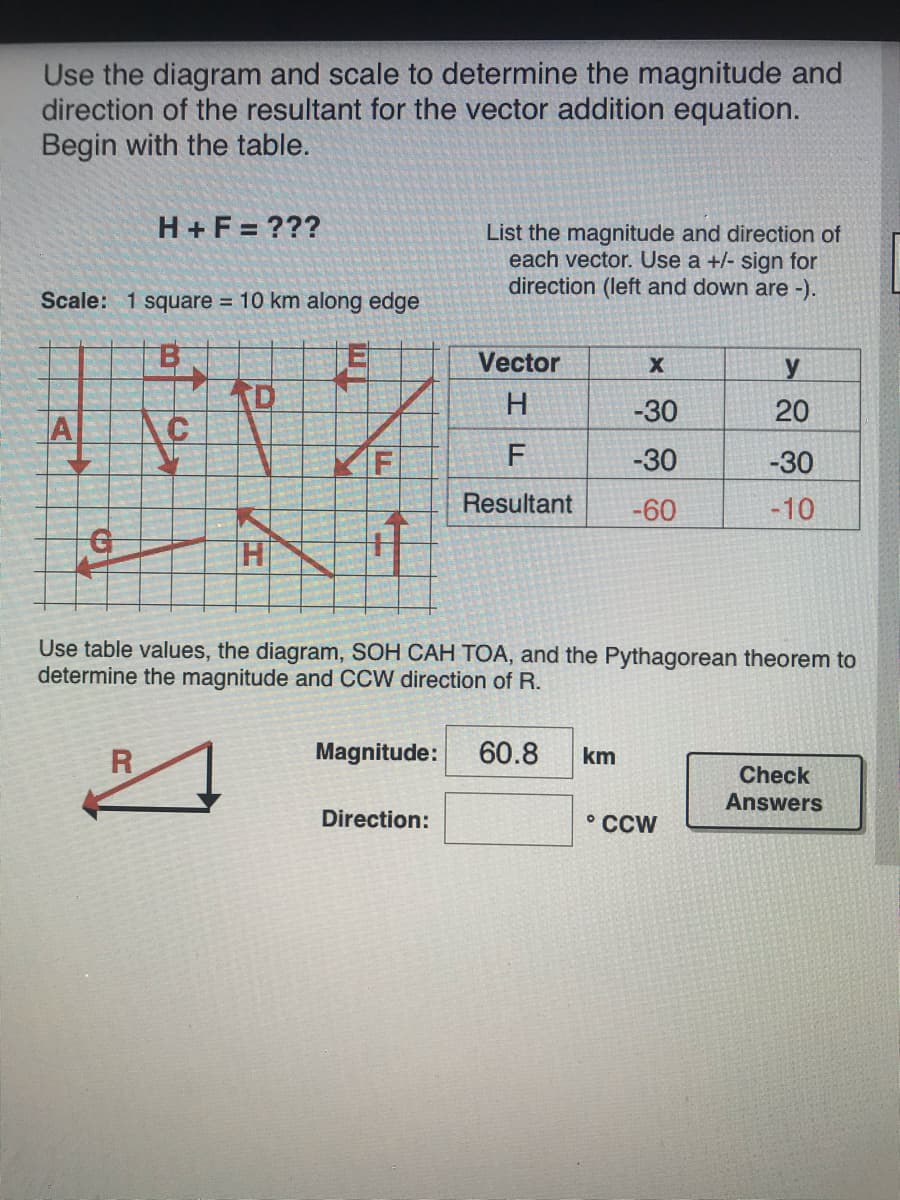Use the diagram and scale to determine the magnitude and direction of the resultant for the vector addition equation. Begin with the table. H +F = ??? List the magnitude and direction of each vector. Use a +/- sign for direction (left and down are -). Scale: 1 square = 10 km along edge Vector TD H -30 1F F -30 -30 Resultant -60 -10 Use table values, the diagram, SOH CAH TOA, and the Pythagorean theorem to determine the magnitude and CCW direction of R. R Magnitude: 60.8 km Check Answers Direction: • CCW 20
Use the diagram and scale to determine the magnitude and direction of the resultant for the vector addition equation. Begin with the table. H +F = ??? List the magnitude and direction of each vector. Use a +/- sign for direction (left and down are -). Scale: 1 square = 10 km along edge Vector TD H -30 1F F -30 -30 Resultant -60 -10 Use table values, the diagram, SOH CAH TOA, and the Pythagorean theorem to determine the magnitude and CCW direction of R. R Magnitude: 60.8 km Check Answers Direction: • CCW 20
Related questions
Question
100%
Fill in the Blank direction: box

Transcribed Image Text:Use the diagram and scale to determine the magnitude and
direction of the resultant for the vector addition equation.
Begin with the table.
H +F = ???
List the magnitude and direction of
each vector. Use a +/- sign for
direction (left and down are -).
Scale: 1 square = 10 km along edge
Vector
TD
H
-30
1F
F
-30
-30
Resultant
-60
-10
Use table values, the diagram, SOH CAH TOA, and the Pythagorean theorem to
determine the magnitude and CCW direction of R.
R
Magnitude:
60.8
km
Check
Answers
Direction:
• CCW
20
Expert Solution
This question has been solved!
Explore an expertly crafted, step-by-step solution for a thorough understanding of key concepts.
This is a popular solution!
Trending now
This is a popular solution!
Step by step
Solved in 3 steps with 2 images
